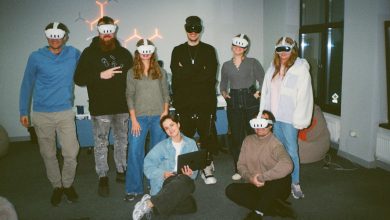
Despite the Covid-19 disruption to budgets, businesses continue to invest in artificial intelligence, but challenges remain around delivering return on investment (ROI). Forecasts suggest global spending on AI will more than than double over the next four years, from $50.1 billion in 2020 to more than $110 billion in 2024.
However, 93 percent of executives worldwide expect to get some value from AI, with 65 percent reporting that they are not yet seeing value from the AI investments they have made in recent years.
The reality is, that current state-of-the-art machine learning has severe limitations in dynamic environments and fails to unlock the true potential of AI for businesses.
Limitations of existing ML techniques
Current mainstream machine learning techniques are great at learning from the past, combing through big datasets, identifying subtle historical patterns which can be applied to problems for which the environment is unchanging and simple, and the data is plentiful. Flagship examples of machine learning successes like this involve the constrained, stable worlds of board games and image databases.
However, these machine learning approaches can fail when dealing with dynamic and complex real-world data. The problem is that current machine learning approaches are curve fitting exercises. They attempt to learn from the past, instead of uncovering the ‘real’, or causal relationships that will continue to hold over time. They are effectively driving forward by looking in the rear-view mirror.
Left in the dark
A large proposition of AI-based tools are black box solutions – they are opaque and businesses can’t understand how the solution they arrived at was reached. This leads to a lack of trust as businesses struggle to let machines they don’t fully understand make decisions for them, as well as regulatory concerns. In the last 12 months, some ML models across industries were revealed as unfit for purpose when COVID-19 hit, as they were dependent on historical datasets and businesses couldn’t grasp where the problems lay.
Imagine taking your car to the garage. The mechanic will lift the bonnet to understand which part needs repairing/adjusting. Similarly with AI machines, it’s important to understand what’s happening under the surface.
Despite these next generation technologies being positioned as unburdening human resources allowing focus on more high level tasks, it’s important not to simply take a step back from our AI models. We need to interrogate the systems to truly understand what’s happening in the background and then change the parameters and constraints, which are directly linked to optimising KPIs to resolve any outcomes like promoting bias.
That is why as AI becomes more embedded in businesses and society, it’s important to expose the reasons why machines come to certain decisions. This is critical in heavily regulated industries such as financial services and with potentially more regulation on the horizon, being able to have transparency of these models will be key to improving and trusting these systems.
Unlocking ROI by understanding machines
Machines need to be capable of understanding “cause and effect” relationships in order to advance machine learning and to make reliable predictions. This is where causal AI comes into play, which is not dependent on historical datasets.
As humans we learn this early on – for example, we understand the causal relationship between something being hot and being burnt, so we never do it again. The heat is the cause and the effect is the burn. This is simply a relationship between variables, as we can provide a logical reason why this is happening, implying cause and effect.
This thinking underpins Causal AI, where machines understand cause and effect to make accurate predictions linked to revenues, stock prices or real estate yields. By understanding causal drivers and relationships, Causal AI adapts three times quicker to new market conditions than current machine learning technology.
Not only are they fit for purpose in a dynamic environment ubiquitous within finance and business, but they also allow users to simulate events that didn’t happen and reason about the hypothetical repercussions of those events.
Crucially, models built with causal AI are also highly transparent, allowing organisations to connect the dots between input features and target variables that have been discovered in the data.
With this, users are presented with the answers to the all important questions, which become very critical when reporting to a board or regulators on the value the intelligent machine is delivering to the bottom line. It allows organisations to audit, improve, gain insights from, scrutinise and partner with AI systems.
Industry use case of causal AI application
These causal AI systems can have a truly transformational impact on ROI across industry and society.
For example, CLS Group, a specialist US financial institution that provides settlement services in the foreign exchange market applied causal AI to examine the macroeconomic factors associated with corporate EUR/USD transactions.
They extracted value from CLS’s own FX Spot volume data – which consists of over 1 billion trades across 18 currencies. Using this technology, CLS was able to identify the changing macro patterns in the world’s major currencies throughout the pandemic and Brexit.
Using the findings, CFOs and treasurers at corporates can review their hedging strategies in light of their exposures to the corresponding currencies. Market participants can also use the analysis to help evolve trading strategies that need to reflect changes in market dynamics resulting from Covid-19.
In healthcare, the technology could improve staff and bed allocation, saving around 15% in operational costs and help to predict the spread of diseases in real-time.
Within food production, cause and effect AI technology could potentially save at least $500 billion a year around food wastage. Globally, food wastage amounts to about $1 trillion, or ironically half an Apple. If you could predict microclimates and demand, you could cut food wastage in half.
The future belongs to artificial intelligence and for businesses to optimise their investment in this technology, artificial intelligence needs to be able to understand and explain these models to gain confidence in the decision making capabilities of our algorithms.




